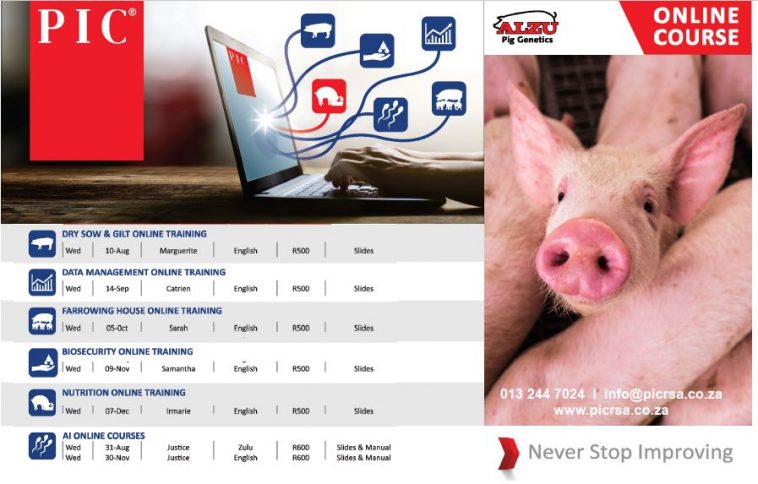Pig farmers often focus on reproductive traits. These traits are important, but also keep in mind how your herd is making use of feed because 80% of a farm’s costs is feed.
Feed conversion ratio (FCR) is how many kilograms of food a pig eats to gain 1 kg of weight. The lower this ratio the better. FCR can be an important financial and performance indicator, but it needs a more detailed interpretation. Here are some of the factors that affect FCR.
Lean gain vs age
The efficiency with which pigs convert feed to muscle declines with age. Lean gain is far more efficient than fat gain, which becomes a more prominent form of gain as pigs age. Therefore, lean gain at a higher age leads to a better lifetime FCR. These factors are a function of the genetic potential of the animal.
Feed composition
The amount that you spend on a diet can quite largely affect FCR. This is because higher energy and protein content (in a balanced ration), the better the pig converts it to muscle. But energy is expensive. A balance must be struck. A farm with a lower FCR may be spending more on a more expensive diet, but in fact may be losing money in comparison to a farm with a higher FCR but slightly cheaper diet.
Feed type
Pelleted feeds produce a better FCR, because it is better for the gut and wastage is easier to control. But consistent quality is difficult to control. Wet feeding can improve FCR, because it has improved digestibility and reduced dusting.
Feeding manner
The way in which the pigs are fed also matters. Ad libitum feeding can produce better performance as pigs eat at will and don’t damage their gut by over-eating, and it reduces competition. Competition is furthermore reduced by having adequate feeder space. However, with ad lib you take the risk of feed spoilage and wastage.
Health and environment
The immune system requires a fair amount of energy to mount respond to diseases, taking energy away from growth. The same applies to poor environment and management, where more energy is required for pigs to maintain themselves due to the environment, the less energy can be directed to growth. The resulting mortalities negatively affect their FCR.
Management
Pigs’ performance becomes difficult to track when using a continuous flow. Feed usage and weight gain are difficult to match up as well as the accuracy of data recording. The output is only as accurate as the input.
FCR has many points to consider. The FCR that is best for you may be different to the farm next door. Although you and your neighbour may have the same pigs, the FCRs may differ due to different environments and management.
While there are so many factors to consider when analysing FCR, it still shows how well you’re doing, where you’re improving, and where you need improvement. The most important thing to remember is to keep as many accurate records as you can.
What is 0,1 FCR worth in your piggery?











